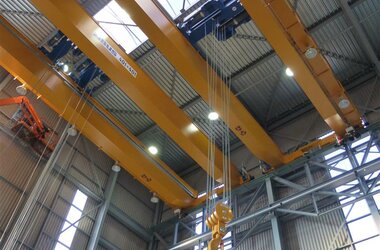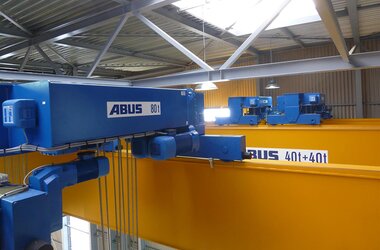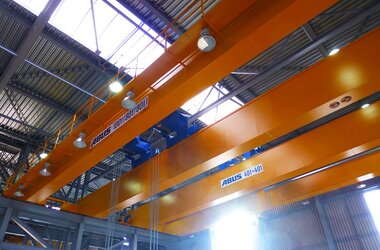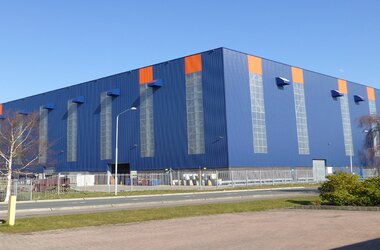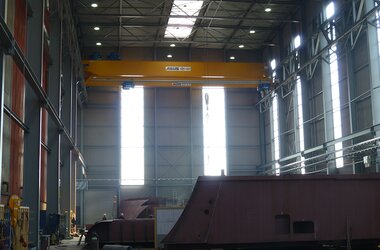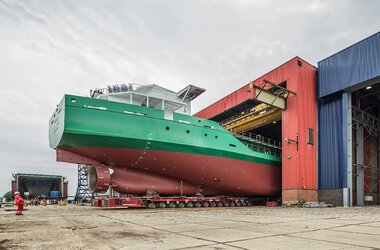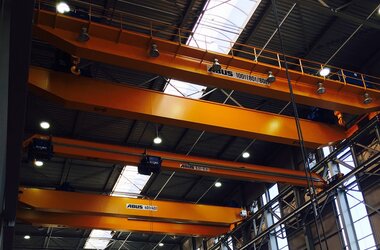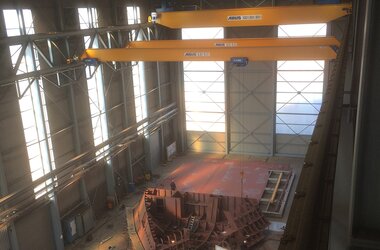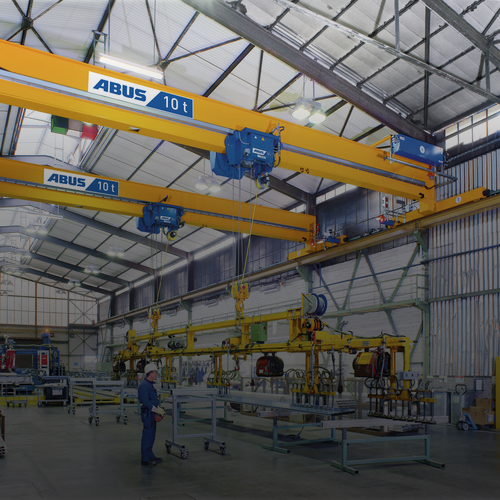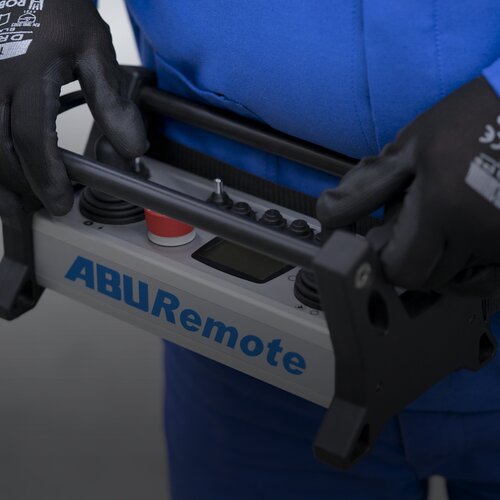ABUS EOT cranes make the production flow efficiently in a Dutch shipyard
Royal Bodewes (www.royalbodewes.com) is a shipyard in Hoogezand in the northeast of the Netherlands that has been in existence since 1812. Well over 200 years of tradition and experience are reflected in the construction and delivery of modern boats of highest quality which this family-run business is renowned for. A new production hall was commissioned recently by Royal Bodewes at their headquarters at Hoogezand. Optimised internal logistics in combination with state-of-the-art machinery are to bring about even more efficient production as well as significant production increase. Cranes are a main ingredient in this process of efficiency increase. Longstanding cooperation was the decisive factor in equipping the new production building with ABUS cranes. ABUS supplied cranes for the old production plant as long ago as 1977.
The ABUS EOT cranes are indispensable in the production process of the innovative Bodewes ships. At present Royal Bodewes is building a series of ten merchant vessels with capacities of 150 dead weight tonnes each. These ships are built entirely in the shipyard. The most impressive characteristics of these Bodewes merchant vessels are the special shape of the ships’ bows—making the ships far more energy efficient and saving tonnes of fuel oil, the loading capacity of 222,400 cbft and a gross tonnage below 3,000. GT or gross tonnage denotes the calculated total size of a ship. The first ships in this series of ten merchant vessels were handed over to their new owners on November 13, 2015
The following cranes were supplied by ABUS Kraansystemen BV (www.abus-kraansystemen.nl), the Dutch daughter company of ABUS Kransysteme GmbH, for the new production plant at Hoogezand: three single girder cranes of the ELK type with spans of 21.6 metres, each equipped with two wire rope hoists with load capacities of 6.3 tonnes, and two big double girder cranes of the ZLK type with spans of 22.3 metres. One of the ZLK cranes comes with a total lifting capacity of 100 tonnes composed of two wire rope hoists with 80 tonnes SWL each. In combination with the second double girder crane which features two wire rope hoists with 40 tonnes SWL a total lifting capacity of 180 tonnes can be reached if the two cranes work in tandem. This makes it possible to safely transport long and large components during the production process. The cranes are operated by the ABUS radio remote control ABURemote Joystick. This control unit of the crane features separate control elements to individually control each hoist. Selector switches make it possible to control individual hoists or to control both hoists together. It is even possible to control the hoists in opposing directions, i.e. the cranes have been released for load turning. Crane lights installed along the crane bridge illuminate the working area thus providing additional safety for the crane users who have all had to be trained in the special requirements of this exacting transport task.
Countless work steps are required before a ship can be launched. At the Royal Bodewes shipyard the boats are built together of individual components: the bridge, the bow, the stern, and the middle parts. The three ELK cranes are used for the welding and mounting processes of these elements. Interestingly enough the bow as well as the stern are worked on standing on their heads (the components, not the people). Once work on bow and stern is finished the double girder cranes are used to turn these components. The middle pars of the ship are divided into three sections: the ship’s hull and the two bulkheads. Here also the single girder cranes are used during the welding and assembling processes. Hull and bulkheads are then assembled into the middle part. Such a middle part is a real heavy weight of about 150 tonnes. The lifting process requires the use of both double girder cranes in tandem operation.

